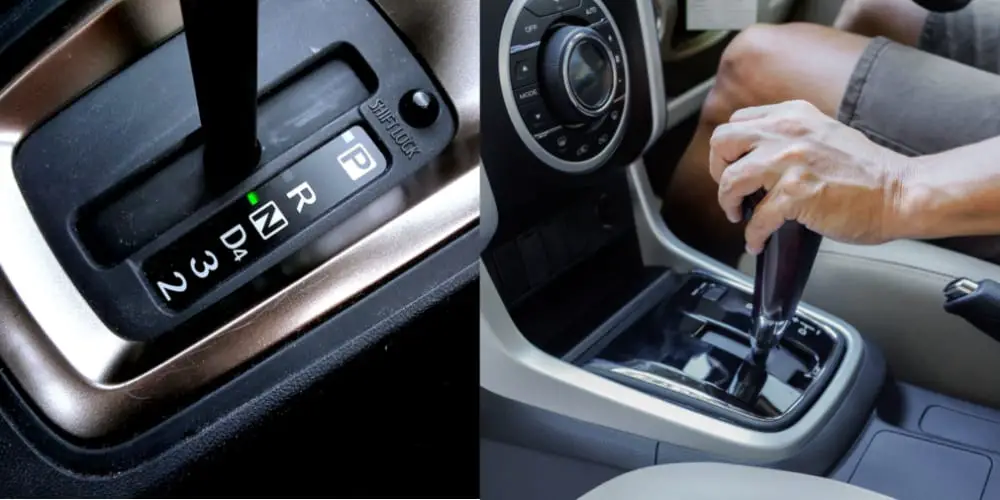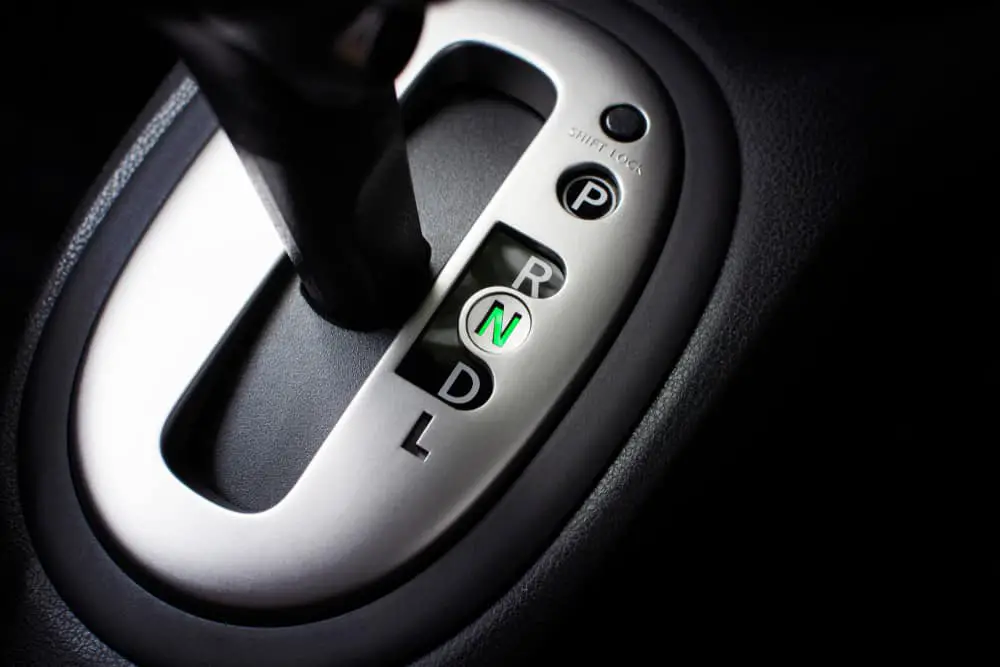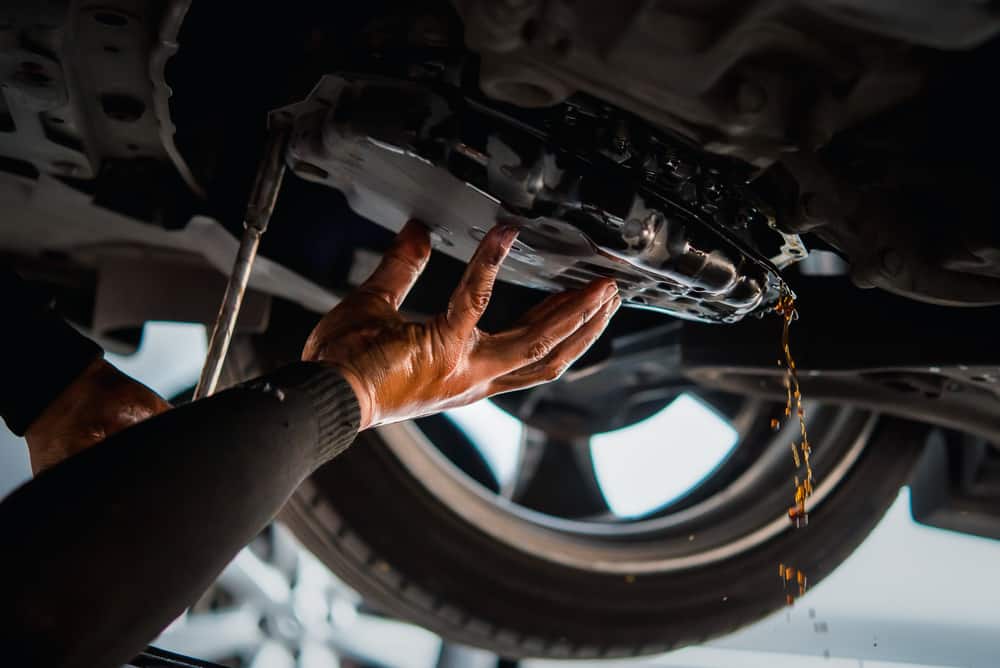
If a vehicle is stuck in neutral, it will not take you anywhere until the problem has been rectified. Luckily this is a common problem that can be fixed quite easily. So, these are the common causes and fixes if your car is stuck in neutral.
The common cause of a car’s transmission becoming stuck in the neutral position is due to a lack of maintenance. Other causes may be a faulty lock mechanism, contaminated transmission fluid, damaged shifter cable, or linkages. Regular inspection and fluid replacement will prevent unwanted damage.
Read on to discover the common causes for the shifter becoming stuck, how to fix it, and some easy preventative maintenance.
What Causes Gear Shift To Get Stuck In Neutral?

There are a few things that can cause the gear shifter to become stuck in neutral. In many cases, it is due to a lack of vehicle maintenance, but if not, it may be one of the following:
The Lock Mechanism Of The Shifter
The lock mechanism is a safety feature that will lock the transmission and prevent the car from moving if no one is behind the wheel.
This is done with a sensor in the driver’s seat that is weight sensitive and will only activate over a certain weight, so a toddler or pet won’t set it off. If the sensor does not detect a person, it automatically locks the transmission.
If the sensor is faulty, it will lock the transmission no matter how many times you move the shifter. But the car manufacturers foresaw this problem and installed an override.
The override can be situated anywhere inside the car, so check the car owner’s manual for the precise location.
It is advisable to have the car inspected and the faulty sensor replaced so that the lock mechanism safety feature functions again.
Dirty Transmission Fluid
An automatic transmission relies on the efficiency of fluid dynamics to perform optimally. If the transmission fluid is contaminated, it will fail and may even cause catastrophic damage to the gears and clutches.
It will also prevent the shifter from selecting the correct gear or stop it from moving altogether, as the mechanical components cannot move smoothly.
In many cases, changing the transmission fluid will fix this problem. Check the filter on the transmission for any metal debris; if it is free of any metal shavings, then there should be no permanent damage.
Check the transmission fluid regularly and change it when required to prevent this problem from occurring again.
It is imperative that the correct transmission fluid is used, as the transmission is specifically designed to work with a fluid with a specific viscosity.
Faulty Engine Control Unit
The ECU (Engine Control Unit) is the nerve center of modern cars, and it also controls the automatic transmission. The ECU will determine which gear the transmission should select, depending on the car’s speed and load.
If the ECU detects a fault or if the unit is faulty, it will prevent the shifter from selecting a drive gear.
The ECU will first attempt to override or bypass a fault, but if it is unsuccessful, it will keep the transmission in neutral.
If the ECU prevents the transmission from shifting into gears, then there may be other underlying problems that need to be tended to.
It is advisable to have the vehicle checked with a scan tool to identify if there are any fault codes.
If the ECU is faulty, it may be rectified by giving the unit a hard reset. It may need to be replaced if this does not solve the issues.
Damaged Transmission Linkage
The shifter in a manual and automatic vehicle uses linkages (cable or mechanical) to connect it to the transmission. If the car has been in a light accident or has been driven on a very bumpy road, the linkages may have rattled loose.
If the linkage is loose, it prevents the shifter from selecting any gear. If this is the case, check the engine bay linkages and reconnect if needed. If the linkages are still connected, it may be a hydraulic issue.
Transmission Preventative Maintenance

Many issues related to the transmission can easily be prevented if preventative maintenance is done. It is recommended to do these checks every 1000 -1500 miles to avoid most malfunctions.
This can be done easily at home if you consider yourself a bit of a DIY buff or take the vehicle to a service center for added peace of mind.
How To Check The Transmission Fluid
The transmission needs adequate lubrication to function correctly. The vehicle should not lose any fluid during daily operations, but if it does, there may be a leak. Follow the following steps to check and top up the transmission fluid.
- Step 1 – Park the car on level terrain and start the engine. Let the engine run and warm up for a few minutes.
- Step 2 – While the engine is running, locate the transmission fluid dipstick. It is commonly found where the engine and transmission meet. It will look similar to the oil dipstick on the engine.
- Step 3 – Be cautious, as the fluid will be hot! Remove the dipstick, wipe it with a waste cloth or paper towel, and reinsert. Wait a few seconds and remove it again.
- Step 4 – Check the dipstick to see the fluid level. There will be markings in the dipstick (Full and low). If the fluid is under the full mark, it will require a top-up.
- Step 5 – Insert a long nose funnel into the transmission dipstick hole. Slowly add small amounts of transmission fluid at a time. Remove the funnel and reinsert the dipstick and check the level. Repeat until the fluid level reaches the full mark.
- Step 6 – Reinsert the dipstick and wipe off any spilled fluid. Now the transmission fluid is topped up.
Check Transmission Linkages And Cables
Mechanical items will eventually wear down and perish over time, but spotting wear early can prevent breakdowns and save money in the long run.
- Step 1– Move the shifter through all its gears a few times. Notice if there is any position where the shift feels sluggish. In manual transmission cars, push the clutch pedal every time you select a new gear. The gear shifter should feel smooth and slip in with little force.
- Step 2 – Check the shift linkage in the engine bay. It should be clear of any debris. Push on the linkage to see if there is any play or sideways movement. In manual transmission cars, check the clutch cable the same way.
- Step 3 – Any play in the clutch cable or linkages can be adjusted by turning the end bolt. The bolt is usually located at the end of the cable run. For the linkage, it will be where it connects to the transmission. If there are no end bolts to adjust, the vehicle should be taken to a service center to replace the cable or linkage.
Conclusion
If a car is stuck in neutral, it may be due to contaminated transmission fluid, a faulty ECU, a damaged linkage, or a faulty transmission lock mechanism. Regular preventative maintenance will assist in preventing the car from becoming stuck in neutral.
